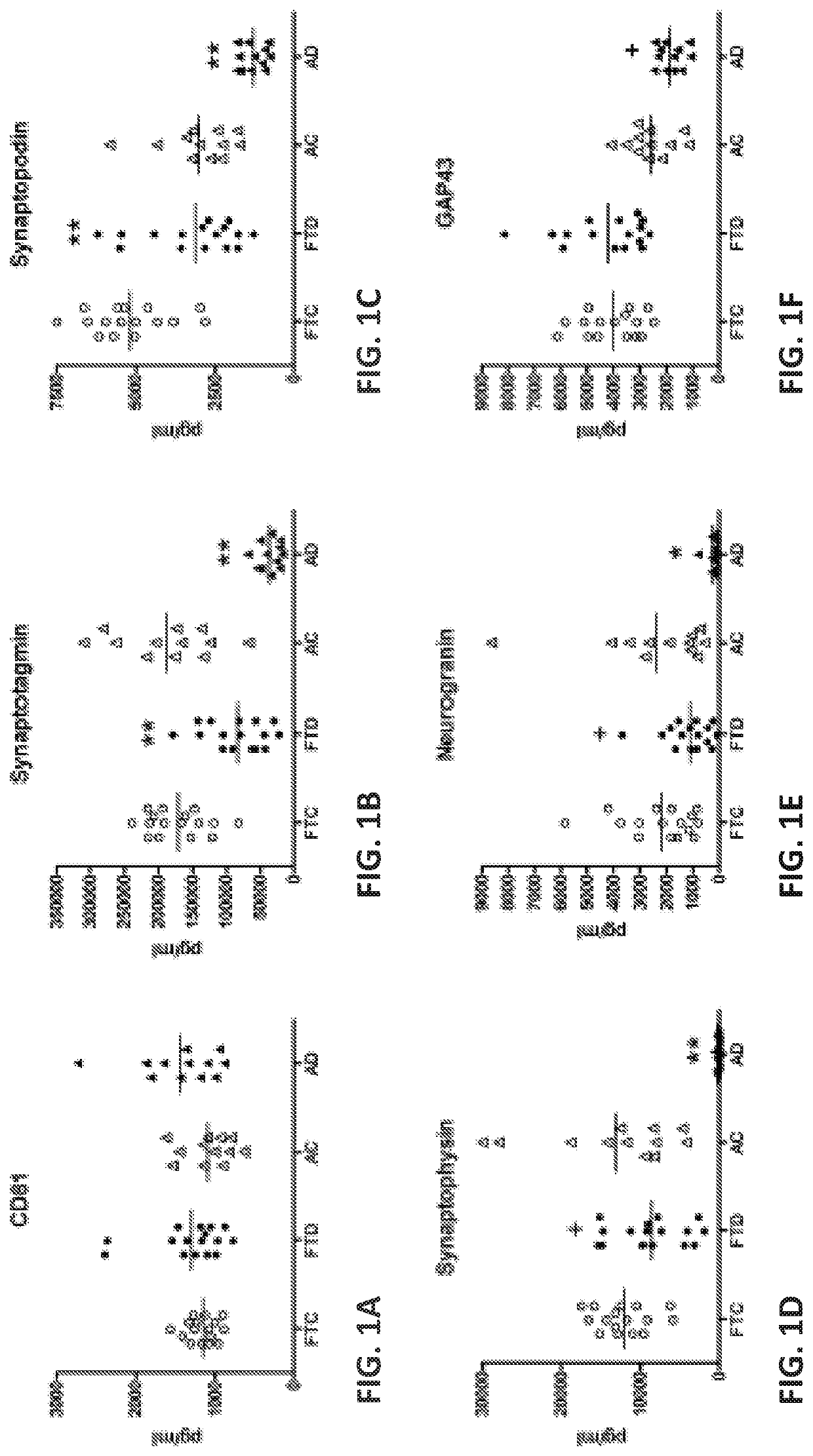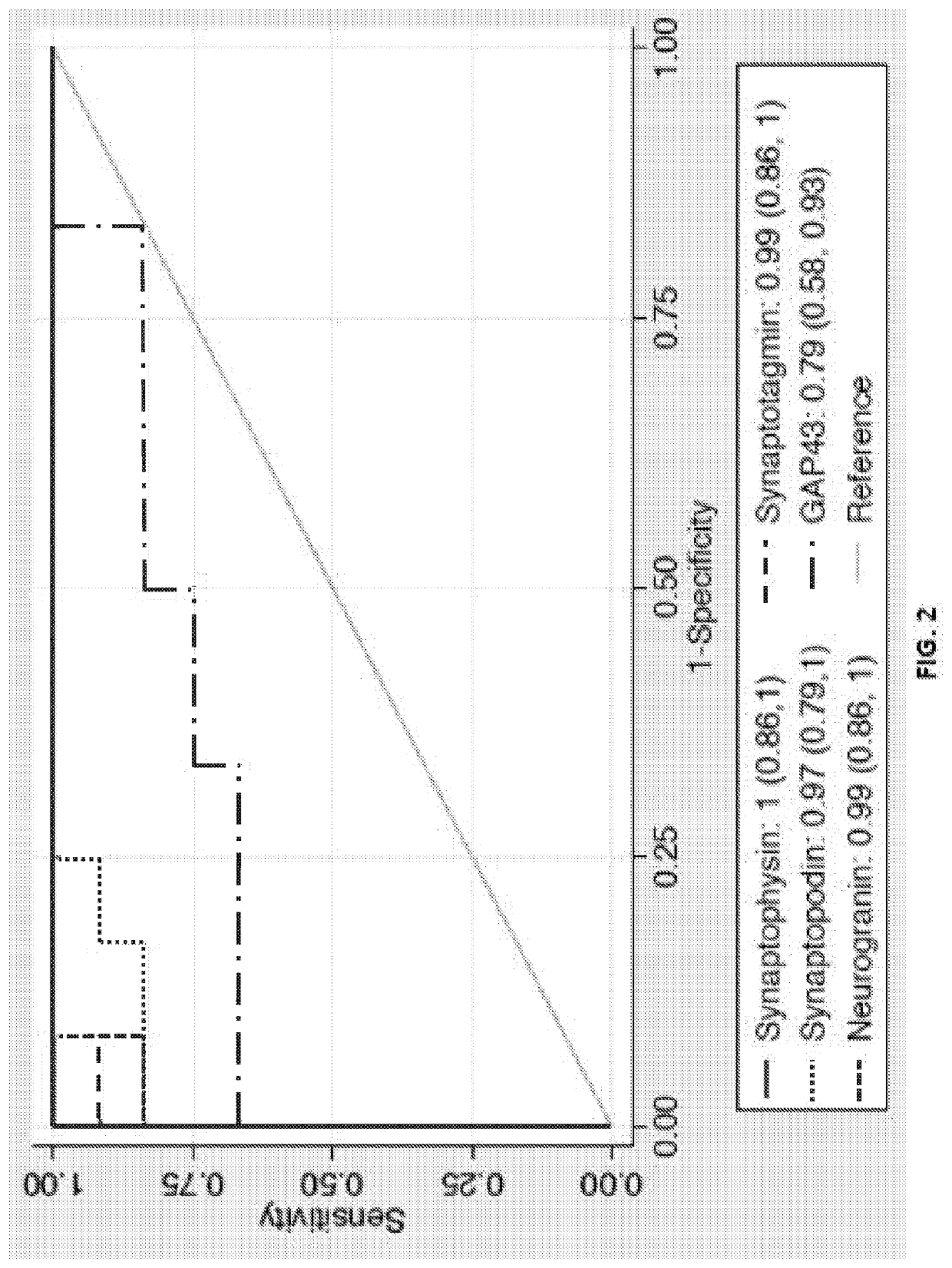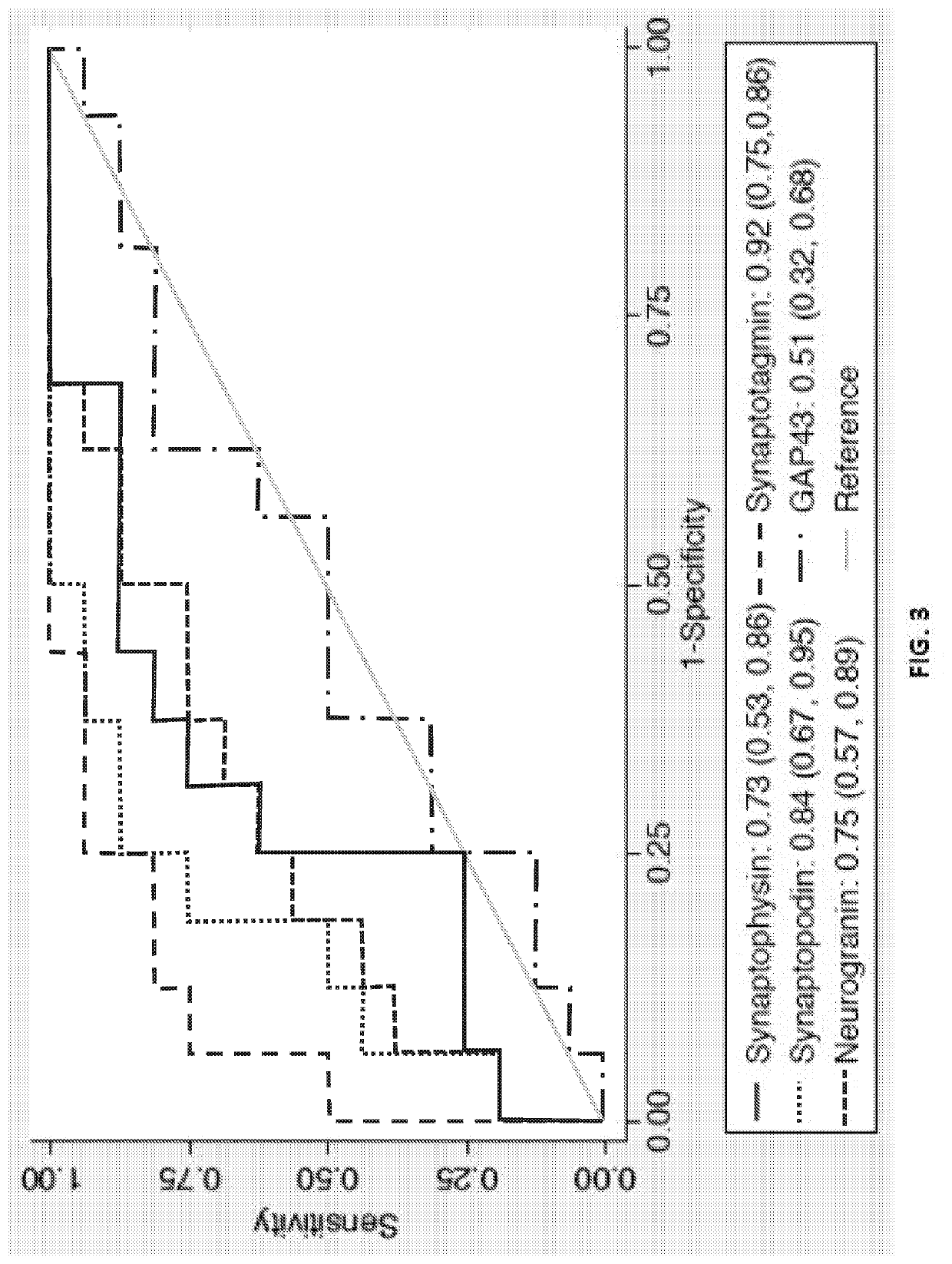Synaptic protein biomarkers and differential diagnosis of alzheimer's disease and other neurodegenerative disorders
a synaptic protein and biomarker technology, applied in the field of synaptic protein biomarkers and diagnostic and prognostic methods for alzheimer's disease and other neurodegenerative disorders, can solve the problems of inability to accurately detect the disease, many are costly or not practical, and none are highly accura
- Summary
- Abstract
- Description
- Claims
- Application Information
AI Technical Summary
Benefits of technology
Problems solved by technology
Method used
Image
Examples
example 1
rived Plasma Exosomal Synaptic Protein Levels in Human Subjects with Neurodegenerative Disorders
[0068]Levels of synaptophysin, synaptopodin, synaptotagmin, neurogranin, and human growth associated protein 43 (GAP43) proteins were assayed in human subjects with neurodegenerative disorders as follows. Venous blood was collected from control subjects (AC, n=12; FTC, n=16), subjects with Alzheimer's disease (AD, n=12), and subjects with frontotemporal dementia (FTD, n=16). The diagnosis of AD and FTD was established by standard clinical and laboratory criteria.
[0069]For blood collection, 10 ml of venous blood were drawn into 0.5 ml of saline with 100 U / ml of heparin, incubated for 10 min at room temperature and centrifuged for 15 min at 1500 g. Plasmas were stored in 0.5 ml aliquots at −80° C. CSF levels of P-T181-tau and Aβ1-42 were quantified by Luminex xMAP technology using Innogenetics INNO-BIA Alz Bio3 kits.
[0070]For plasma, 250 ul received 0.1 ml of thromboplastin-D (Fisher Scient...
example 2
rived Plasma Exosomal Synaptic Protein Levels Predict Development of Neurodegenerative Disorders in Human Subjects
[0077]Neuron-derived exosomal levels of synaptic proteins were assayed in human subjects as follows. Ten milliliters of venous blood were collected from subjects with dementia from AD (n=9) and from subjects with dementia from FTD (n=10) at two time-points: first when cognitively intact (AD1, FTD1) and again one to ten years later after diagnosis of dementia (AD2 and FTD2). Blood samples were processed and exosomes were isolated as described in Example 1 above. Neuron-derived exosomsal proteins synaptotagmin, synaptopodin, synaptophysin, neurogranin and GAP43 were quantified by ELISA kits as described in Example 1.
[0078]As shown in FIGS. 5A, 5C, and 5D, levels of synaptotagmin, synaptophysin and neurogranin for the FTD1 and AD1 patients were lower than for their respective control groups. However, progression of these decreases with declining cognition was observed only ...
PUM
| Property | Measurement | Unit |
|---|---|---|
| Level | aaaaa | aaaaa |
| Purity | aaaaa | aaaaa |
Abstract
Description
Claims
Application Information
 Login to View More
Login to View More - R&D
- Intellectual Property
- Life Sciences
- Materials
- Tech Scout
- Unparalleled Data Quality
- Higher Quality Content
- 60% Fewer Hallucinations
Browse by: Latest US Patents, China's latest patents, Technical Efficacy Thesaurus, Application Domain, Technology Topic, Popular Technical Reports.
© 2025 PatSnap. All rights reserved.Legal|Privacy policy|Modern Slavery Act Transparency Statement|Sitemap|About US| Contact US: help@patsnap.com



